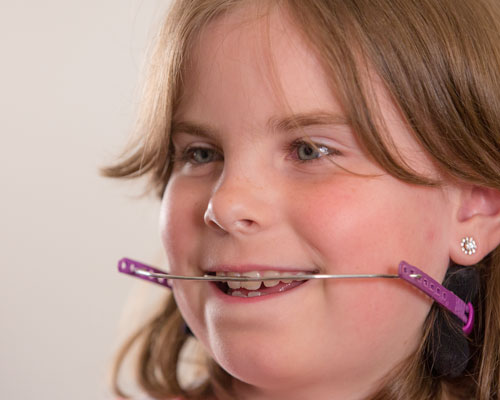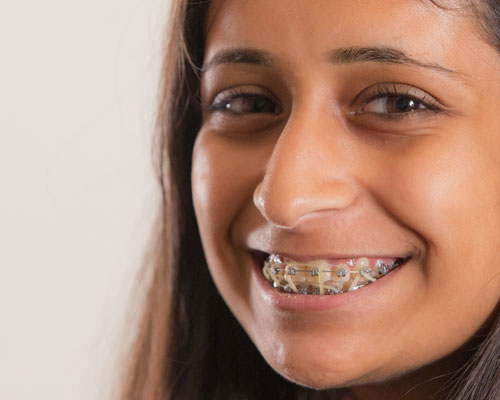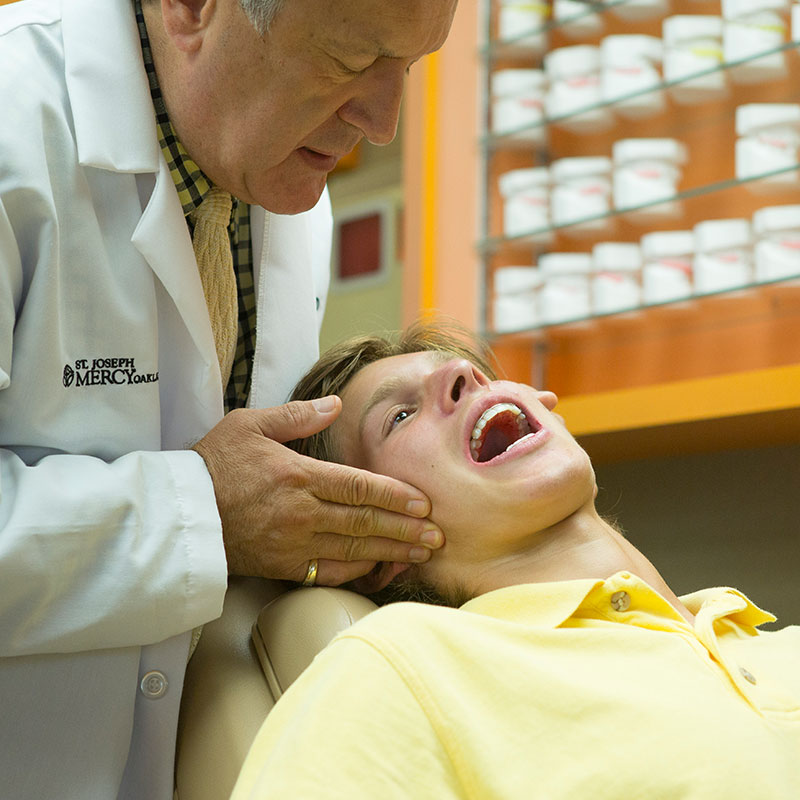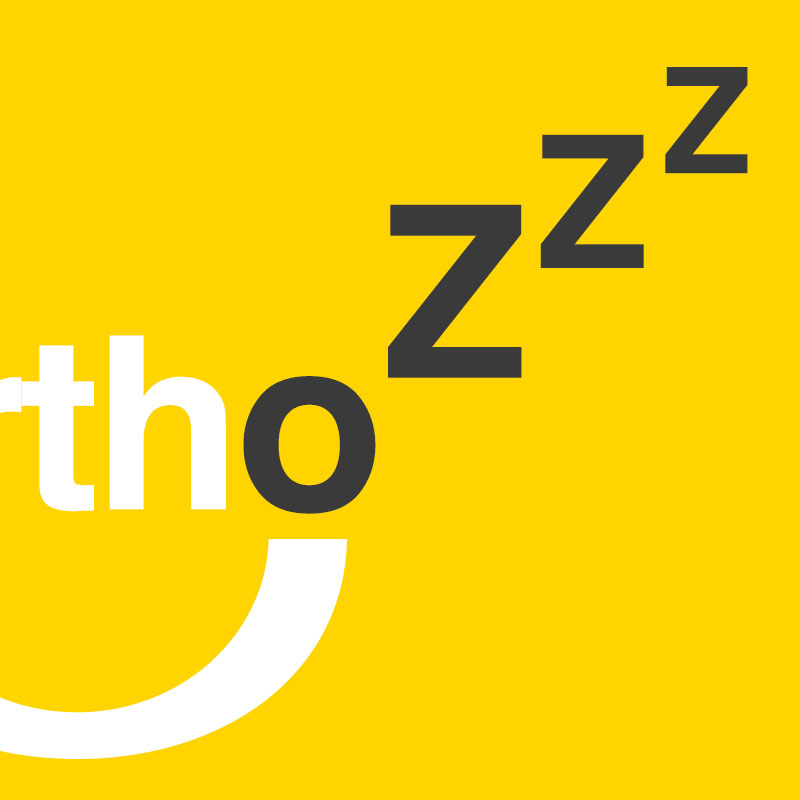We offer a variety of treatment plans for many types of patients, covering all age groups and common dentofacial abnormalities.
Select an area of relevance to you or your child to learn more:
The American Association of Orthodontics recommends an initial orthodontic check-up occurs between the ages of 5 and 7.
By this time, your child’s first permanent molars and incisors will have probably started to emerge, and Dr. Hyduk will be able to spot any subtle problems with the growth of the jaw. For girls, a check-up around age 5 is recommended due to their expedited development.
One of the main benefits of beginning treatment for your child at a young age is the ability to pursue Two Phase Treatment: an orthodontic approach that first addresses the proper relationship between your child's jaws, before correcting the alignment of their teeth.

Headgear
Focusing on jaw relationships, we guide the growth of jaw bones to improve tooth-eruptive positions and correct skeletal abnormalities through the use of various guidance appliances.
Once your child’s facial growth is complete (around age 10), the window of opportunity for impactful Phase 1 treatment closes. Corrections to jaw alignment later in life will require complete nonsurgical remodeling of the jaw or possible jaw surgery, so early childhood treatment is a much preferred alternative.

Braces
Aligning teeth, we move permanent teeth into their final positions using braces and aligners.
Phase 2 treatment is what most people think of when they consider orthodontics. It seldom begins earlier than age 11 as it relies on the presence of fully-erupted permanent teeth.
If your child is a candidate for Two-Phase Treatment, Dr. Hyduk will let you know during his/her initial complimentary exam.
There is a common misconception that successful orthodontic treatment isn’t possible for adults, yet the truth is that healthy teeth can be moved at any age. While our youngest patients are newborns (often with craniofacial anomalies or other birth defects) our our oldest patient ever was 82 years young when he revisited his childhood dream of having braces. Our experience has shown that orthodontic forces move teeth for adults the same as they do for children.
The primary difference between adult and child orthodontics is that children’s jawbones are still developing during treatment. Because of this, treatment plans for adults may include the possibility of orthognathic surgery since facial development has ceased. Often, though, we are able to disguise the jaw imbalance with non-invasive techniques, addressing the patients' chief concerns with a short-term approach to orthodontic care.
The following conditions may mean you’re eligible for treatment:
Gum or bone loss (periodontal disease)
Worn, prosthetically restored and/or missing teeth
Incomplete orthodontic treatment from childhood
As a board-certified orthodontist, Dr. Hyduk will best assess what treatment options are ideal for you, and he will work with your primary dentist to ensure the best possible results.
Please note that veneers, crowns, and other bonding procedures are rarely considered acceptable treatments for teeth alignment, and thus should be considered in tandem and not instead of orthodontic treatment.
Beyond creating a more confident smile, orthodontic care for adults can lead to healthier mouths. With proper treatment, you can reduce the likelihood of tooth decay and gum disease by making it easier to brush and floss. And in recent years, a growing number of orthodontists have started uncovering new links between oral health and the overall health of your body.
To determine if treatment is right for you, call our office to schedule your initial complimentary exam. No matter your age, we believe that your smile deserves to be as beautiful as you are.
Your temporomandibular joints (TMJs) connect your lower jawbone to your skull and are two of the most complex joints in the body – capable of moving in infinite combinations that allow for speaking, chewing, swallowing, and yawning.
TMJ disorders occur when your jaw muscles and joints function improperly, leading to recurrent pain and spasms. Causes for TMJ vary greatly, though often are the result of facial trauma, arthritis, or severe stress. Millions of Americans suffer from undiagnosed TMJ disorders, and the highest incidence rates occur in females ages 20-44.

If you notice abnormal, recurring pain in your jaw, we recommend scheduling an examination. Dr. Hyduk will help you determine if you suffer from a TMJ disorder and will work with you to create a customized treatment plan to bring you relief.
Sleep apnea is a medical condition that temporarily obstructs breathing during sleep. A patient suffering from sleep apnea stops breathing hundreds of times during the course of one night, with each breathing pause lasting between 10-20 seconds. Each time breathing stops, the lack of oxygen temporarily wakes the body up and repeatedly interrupts sleep.
Left untreated, sleep apnea can lead to fatigue, headaches, and even high blood pressure, diabetes, and risk of heart failure. More than 18 million Americans suffer from sleep apnea today, many of whom proceed without treatment.

If you suspect you suffer from snoring, sleep apnea or other sleep disorders, consider scheduling an examination with Dr. Hyduk. Treatment plans vary greatly depending on individual needs, though often involve the use of oral devices that an orthodontist can prescribe to prevent throat blockage. Dr. Hyduk will assist with your diagnosis and will work with your primary physician and possibly other doctors to improve your sleep.